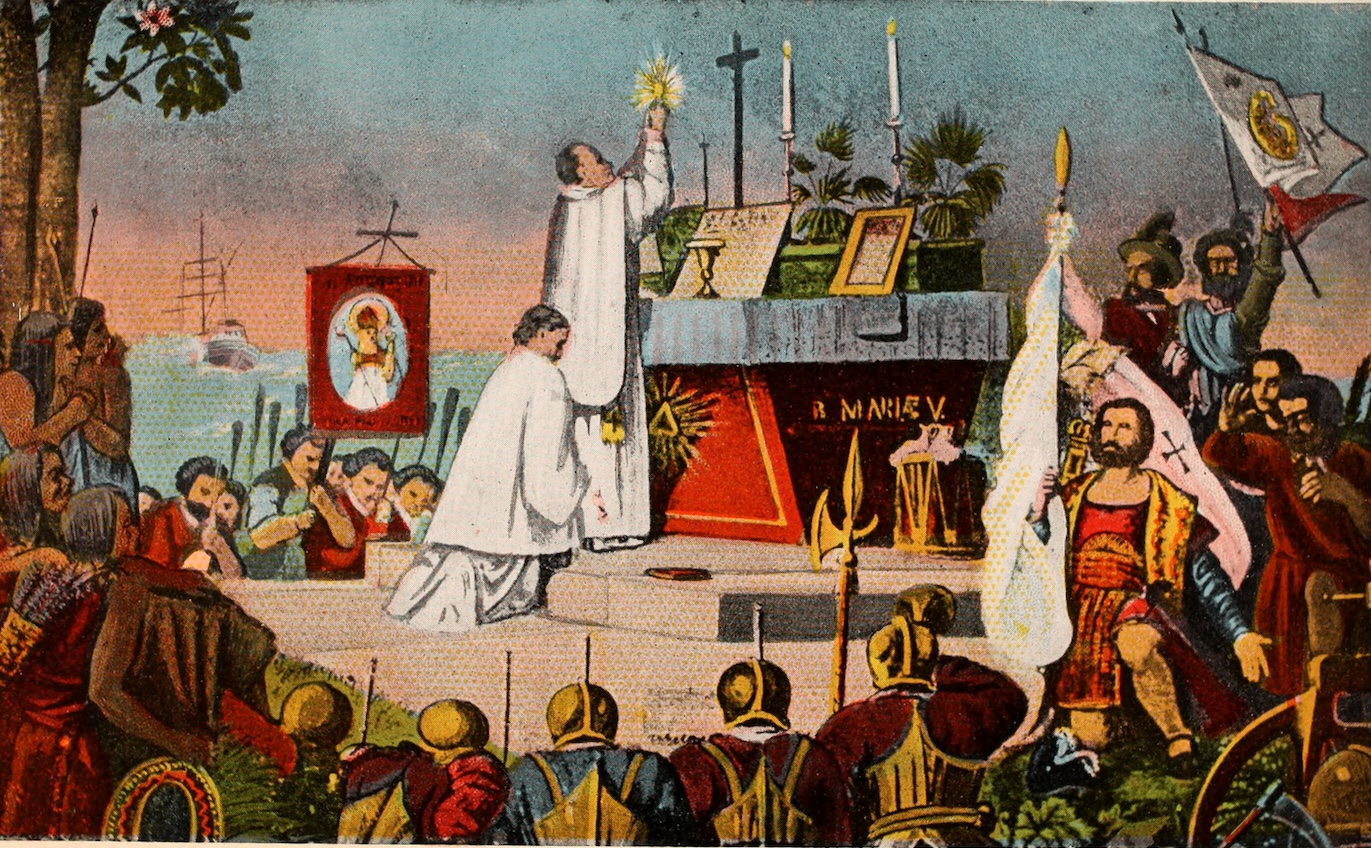Stained glass is a fragile and yet enduring Christian liturgical, contemplative and decorative treasure. In the centuries after the Norman Conquest, England’s cathedrals became vast theatres of light, their great windows designed to communicate the mysteries of salvation to all who entered. In an age when most could not read Latin or English, stained glass broadcast the Bible and the Christian story in colour. The Creation, the Genealogy of Christ, the parables of Christ, the Apocalypse, saints and martyrs and their stories — all were made visible in windows filled with deep reds, blues, yellows and grisaille or greys.
For Abbot Suger of Saint-Denis, the pioneer of Gothic architecture, light entering a church through stained glass was no ordinary light, but “divine light”, a foretaste of heaven. His words resonated in England, where Gothic builders raised walls thinner and windows higher, filling them with colour to overwhelm the soul.
Yet these fragile treasures suffered grievously. After Henry VIII’s break from Rome in 1534, bringing about the English Reformation, images were denounced as idolatrous under his son Edward VI. One hundred years later, during the English Civil War and Commonwealth, iconoclasts justified smashing window images of feigned miracles, pilgrimages, idolatry and superstition. Much cathedral glass was deliberately damaged; some survived in fragments often reassembled hastily afterwards. In the late 17th century, Sir Christopher Wren designed St Paul’s Cathedral deliberately to be glazed with clear glass to light the interior and emphasise the clear light of reason of the Renaissance — with man at the centre of all things — and the Reformation.
Gradually, in the 18th century, we see the emergence of painted glass in English cathedrals — now part of the Church of England — and both the 19th and 20th centuries witnessed huge explosions in creativity in ecclesiastical stained glass.
In my new book Divine Light: The Stained Glass of England’s Cathedrals, we survey 50 windows, at least one from each Anglican cathedral and from the two royal peculiars, that span nearly 900 years. Here, though, is a shortlist for a pilgrimage of six cathedrals with windows that together tell the story of English stained glass from the 12th century through the Reformation, ending with a beautiful 20th-century ecumenical statement.
Canterbury Cathedral: The Sower Among Thorns and on Good Ground (c.1180)
Canterbury holds the earliest comprehensive stained-glass scheme in England, made after the martyrdom of St Thomas Becket in 1170. One remarkable panel is The Sower Among Thorns and on Good Ground, from the Second Bible Window in the choir aisle. The scene is astonishingly alive: the sower strides diagonally across his furrows, in elegant detailed costume, seed basket with tiny feet hanging from his neck. This small scene tells not only the parable but makes use of apparently modern techniques, including the sower’s head turned in contrapposto and going over the panel’s borders, and is set in a deep and highly atmospheric landscape.
York Minster: The Five Sisters Window (c.1250) and The Great East Window (1405–08)
We have Sir Thomas Fairfax, Commander in Chief of the New Model Army from 1645, to thank for the survival of much of the medieval glass in York Minster, after he issued strict orders that the Minster was not to be looted or damaged under pain of death. Step into York Minster’s north transept and five monumental lancets soar upwards, each filled with delicate grisaille — over 100,000 pieces of patterned grey and white glass. Known as the Five Sisters, this Early English marvel abandons narrative in favour of pure pattern, foliage and geometry.
The effect is not of story but of contemplation — light filtered into shades of silver, like lace against the sky. In the 1920s, the window was rededicated to the women of the Empire who perished in the Great War, deepening its resonance as a memorial as well as a devotional work. If the Five Sisters embody quiet order, the Great East Window (1405–08) is sheer spectacle. Designed by John Thornton of Coventry, it is the largest expanse of medieval stained glass in England — 23m by 10m, with 117 panels.
Here the whole sweep of salvation history unfolds, from Genesis to Revelation, culminating in the Last Judgement. The Apocalypse scenes spoke powerfully to a troubled age of schism and rebellion, yet also offered consolation: a vision of Christ’s final triumph. Completed in just three years, “on time and on budget”, Thornton’s masterpiece is a sermon in light on a cosmic scale.
St George’s Chapel, Windsor Castle: The West Window (c.1500)
The West Window of St George’s Chapel, Windsor, is one of the largest stained-glass windows in England, composed of 75 lights filled with saints, kings, popes, bishops and even a master mason. Coming at the end of the Perpendicular Gothic period — a specifically English late Gothic style using grids of vertical and horizontal stone lines — it had earlier facilitated whole walls of glass, including York Minster’s Great East Window (1405–08) and Gloucester Cathedral’s West Window (c.1430). Installed around 1509, St George’s Chapel proclaimed the glory of the monarchy and the Order of the Garter, yet also honoured a few civilians, including William Vertue, the chapel’s final master mason, responsible for the final flourish of fan vaulting in the chapel as well as the west window. Vertue appears with mallet in hand in the bottom right panel.
Partly restored in the 19th century, the window still conveys its original message: the sacred and the civic, the Church and the Crown, united in a single vision of Christian order.
Hereford Cathedral: The Patchwork Window (by 1835)
Many cathedrals and churches refilled their earlier stained-glass windows with fragments of glass shattered by the predominantly Puritan 17th-century iconoclasts. Divine Light features Winchester Cathedral’s Great West Window, where 14th-century glass was replaced in fragments after 1660. In Hereford’s Patchwork Window, fragments of medieval glass destroyed in the Civil War and Reformation were gathered and reset in the early 19th century into a south nave aisle window. Faces of saints, wings of angels, architectural motifs — all jumbled together like a quilt of faith pieced from ruins. The result is strangely moving: each shard once formed part of a vast narrative, now lost, yet together they testify to resilience. In its brokenness, the window embodies the persistence of devotion across centuries of uncertainty and sometimes violence.
Lichfield Cathedral: The Herkenrode Glass (1530s, installed 1805)
One unintended consequence of the loss by English cathedrals of medieval glass resulting from the Reformation was the later acquisition of stained glass from Catholic Europe. The Herkenrode Glass, now in Lichfield’s Lady Chapel, was created in the 1530s for a convent near Liège. The glass was sold during the upheavals of the French Revolution and installed in Lichfield in 1805.
Today, seven tall windows resonate with Renaissance colour and artistry: the Annunciation, Passion, Resurrection, Ascension and Pentecost. The central image, Christ breaking bread, offers a luminous Eucharistic focus above the altar. Conserved in recent years, the glass pours radiant colour across the chapel floor, a jewel of Continental piety transplanted to English soil.
Chichester Cathedral: The Chagall Window (1978)
Finally, to Chichester, and a window by Marc Chagall, commissioned when the artist was in his nineties. Inspired by Psalm 150, it is a great blaze of red filled with floating figures, including King David at his harp, animals and musicians, all praising God: “Let everything that hath breath praise the Lord.”
This window was commissioned by Dean Walter Hussey, who enriched Chichester with numerous works of pictorial art and famously invited Leonard Bernstein to compose the Chichester Psalms, a choral masterpiece blending Hebrew psalm texts with Christian choral tradition and modern rhythms. Inspired by stained glass Marc Chagall had designed for a synagogue in Paris, Hussey commissioned from the Russo-French Jewish artist a window for Chichester. The result is a striking ecumenical statement for our own turbulent times, yet one that feels profoundly medieval in spirit — combining light with deep colours. To stand before it is to sense the unbroken thread linking Canterbury’s 12th-century sower to Chagall’s 20th-century psalmist.
What unites these windows is not only their artistry but their survival, ongoing relevance and accessibility in situ in our cathedrals. Each represents a moment in history — whether 12th-century genius, 13th-century abstraction, 15th-century spectacle, Renaissance import, Tudor royal splendour, patchwork shards or modern imagination.
Together they represent a significant national art collection as well as telling a story of continuity through disruption, of the Church’s resilience, of faith refracted through glass. To see them is to glimpse the glory of God made visible, still glowing, still speaking.




.jpg)



.jpg)
.jpg)






